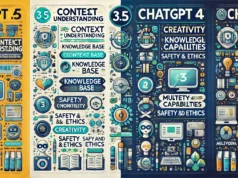How does GPT-3, a language model, contribute to the advancement of AI and its promising future?
The Rising Power of Language GPT-3 and Beyond: Unlocking the Promising Future of AI
Artificial Intelligence (AI) has made remarkable strides in recent years, and one of the most exciting breakthroughs is the development of advanced language models. OpenAI’s GPT-3 (Generative Pre-trained Transformer 3) has garnered tremendous attention and praise for its ability to generate human-like text, paving the way for a promising future of AI.
GPT-3 is an astonishing language model that has been trained on a massive amount of data, enabling it to understand and generate text in a remarkably coherent and contextually appropriate manner. With a staggering 175 billion parameters, GPT-3 has the ability to comprehend and respond to a wide range of prompts, making it all the more impressive. Its understanding and generation of language extend far beyond simple sentences, encompassing complex texts, poetry, programming code, conversational responses, creative writing, and so much more.
What makes GPT-3 so exceptional is its ability to perform tasks without being explicitly programmed for them. By merely feeding it with the desired input, GPT-3 can provide accurate answers, write essays, complete creative prompts, and even create code snippets, all without any specific training for these tasks. This versatility showcases the immense potential of GPT-3 revolutionizing the field of AI by unlocking unparalleled language generation capabilities.
The impact of GPT-3 stretches across various domains, opening doors to countless applications. In the field of education, GPT-3 can provide personalized tutoring and learning materials, adapt to different learning styles, and enhance educational experiences worldwide. In customer service, it can handle complex inquiries, providing fast and accurate responses, ultimately improving customer satisfaction. GPT-3’s capabilities also extend to content creation, assisting professional writers, bloggers, and journalists with generating high-quality articles, reports, and blog posts.
While GPT-3 has certainly received significant attention, it represents just a glimpse of the potential for future advancements in language models. The technology is continuously evolving, and researchers are already working on enhancing subsequent versions. With the rising power of language models, the future holds immense promise and possibility for utilizing AI in ways we previously could only imagine.
However, despite its incredible achievements, GPT-3 still faces limitations. While it excels in generating coherent text, it may occasionally produce inaccurate or misleading information. Bias, both explicit and implicit, can also manifest in the generated content, reflecting the biases within the training data. Additionally, the enormous computing resources required to run GPT-3 limit its accessibility, making it costly for many individuals or organizations.
Addressing these limitations and ensuring responsible deployment of language models is crucial. Researchers and developers must prioritize ethical considerations, robust testing, and regular updates to mitigate potential biases and enhance the accuracy of generated content. OpenAI and the AI community as a whole are committed to addressing these issues and continuing to improve upon this groundbreaking technology.
The future of AI and language models holds immense potential. With advancements in AI technology, we can anticipate more sophisticated and capable language models that will revolutionize various industries. Whether it’s healthcare, journalism, entertainment, or any other sector, the power of language models will unlock new possibilities and transform the way we interact with AI. Exciting times lie ahead as language models like GPT-3 shape the promising future of Artificial Intelligence.









